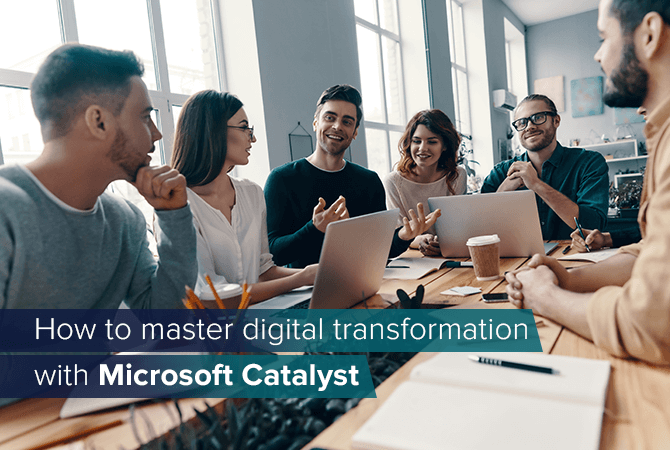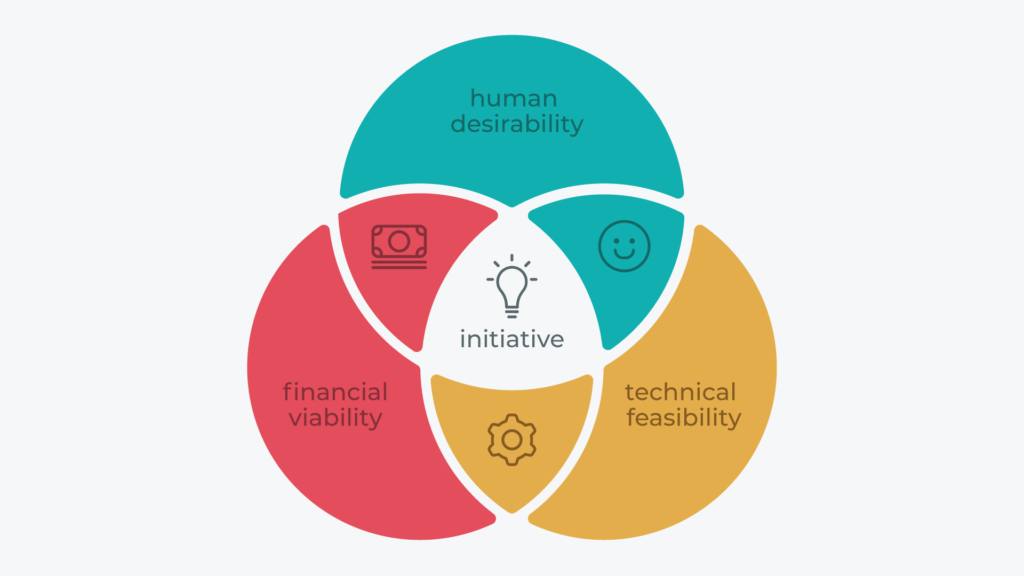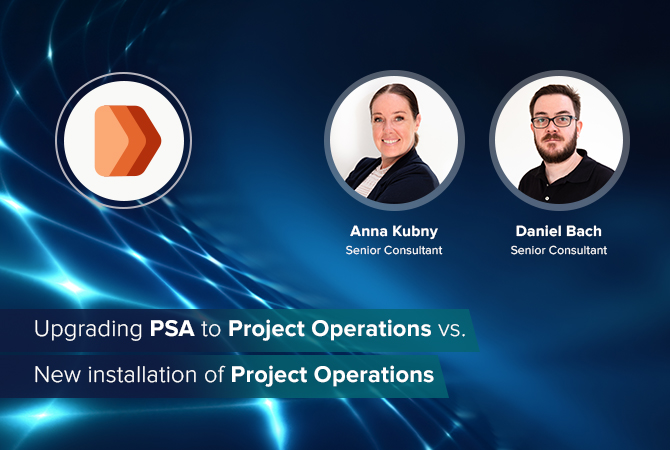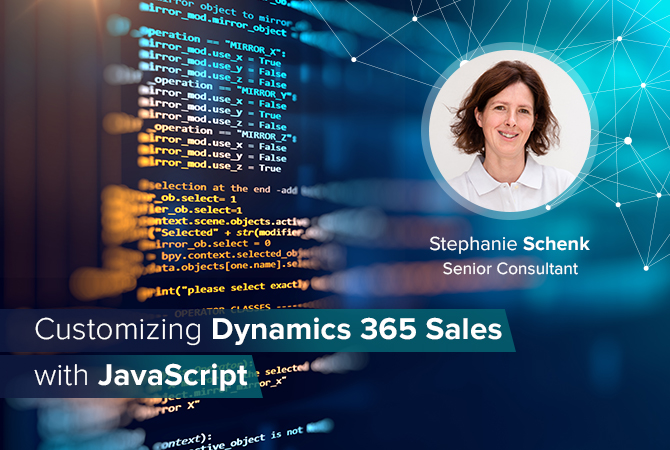
How to master digital transformation with Microsoft Catalyst
Companies across all industries have to deal with digital transformation sooner or later. Only organizations that are capable to adapt to constantly changing market conditions and thus can keep up with their customers’ expectations will remain competitive in the future.
Don’t confuse digital transformation with the mere implementation of modern software, though. Of course, the right technologies are crucial for a successful transformation; but in the end they are the tools to reach the goal, and not the goal itself.
What is Microsoft Catalyst?
Microsoft Catalyst is a program that helps organizations answer the question: What do we want to achieve with digital transformation? Once the goals are clear, and only then, it is time to look for suitable workflows and supportive technologies.
A common mistake in transformation projects is not defining any goals and directly implementing new technologies instead. There are several reasons why:
- The customer believes they know exactly what their company needs
- Outdated solutions are deemed the only problem
- A “New-is-always-better” mentality
The result: The people working with the software realize during the test phase or only when they use it in their daily business that it doesn’t deliver what they had hoped for. In the end, the software has to be customized or even replaced entirely – both alternatives take up valuable time.
How does Microsoft Catalyst work?
Microsoft Catalyst is designed to prevent companies from getting into such a predicament in the first place and instead approach digital transformation with a thought-through plan. The program is based on experiences from former transformation projects as well as on scientifically proven concepts from McKinsey and Harvard Business School.
The IDEA framework is a crucial part:
The four phases of the IDEA framework
 Inspire
Inspire
The first step is to establish the company’s ideal future state and how to get there.
All participants come together in so-called Envisioning Workshops. Various exercises regarding creative and critical thinking help them envision what their company should look like. Once everyone agrees on the destination of the transformation journey, it is time to define what current processes need to change to reach that destination as soon as possible. The participants also decide which changes are the most urgent and need to happen first.
 Design
Design
Next up is the evaluation of the technical feasibility and the financial viability of the initiatives in question.
Microsoft Dynamics 365, Microsoft Power Platform and the Microsoft Cloud offer a variety of solutions for different business areas. A Microsoft Catalyst Partner leads all participants through different scenarios where they imagine how different solutions would alter certain workflows for better or worse. They also consider their (long-term) effects on other departments.
Furthermore, the participants balance the financial investments against possible benefits. It can also be eye-opening to calculate what it would cost the company to change nothing at all.
The creation of a concrete business case closes the Design phase.
 Empower
Empower
Once the roadmap is ready, it is time to get all employees on board.
Now the leadership or the project managers present the business case to the whole organization in a way everyone understands the benefits of the change ahead for them and their working processes. Presentations, images or a short demo video help visualize what the individual workflows could look like in the future. It is easier to convince employees of a concrete idea than of an abstract vision. And in the end, digital transformation can only be successful when everyone involved supports it.
 Achieve
Achieve
In the final step, the company merges all developed initiatives in one actionable plan.
This final plan is the blueprint for the own digital transformation. Consequently, it is important that it contains all steps necessary to realize the digital transformation as well as a realistic timeline. The actual implementation is most likely still going to be a challenge, but when you can rely on a detailed plan, you can be sure it will work out in the end.
Are you ready for positive change?
There is more to digital transformation than just implementing new software. That is why Microsoft developed the Catalyst program: to enable you to plan holistic change.
Crucial to the Microsoft Catalyst program is that every decision regarding possible initiatives equally depends on three measures:
- How are they technically feasible?
- What budget is available to realize them?
- What do stakeholders expect from them?

The desirability and motivation to realize a project play a key role for it to succeed. They are as important as financial viability and technical feasibility. Make sure to involve stakeholders from all relevant departments and, if possible, from different hierarchy levels.
How we support you
As a qualified Microsoft Catalyst Partner, we guide you through the four IDEA phases in a range of remote and on-site activities. Afterwards you can tick all boxes on the preparation list for your digital transformation:
- You know your goal.
- You established what needs to change.
- You found the right technologies.
- You put together a concrete business case.
- Your employees know what to expect and support your idea.
- You have a detailed, actionable plan to fall back on.
- You can be sure to have considered all relevant aspects.
Now you can take the final step with a clear conscience and implement your planned changes – proMX is happy to assist you.
As a qualified Microsoft-Catalyst-Partner, we support you throughout all phases of the IDEA framework and beyond. Schedule a free consulting session to talk about your transformation!

 Inspire
Inspire Design
Design Empower
Empower Achieve
Achieve








